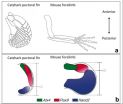(Press-News.org) In a commentary published in the Aug. 13 issue of JAMA, Johns Hopkins experts say consolidation of hospitals into massive chains threatens healthy competition, reduces patient choice and could drive up medical expenses.
The authors call on the Federal Trade Commission -- the regulatory body overseeing business practices and consumer protection -- to be more vigilant and cautious when hospital systems seek approval to consolidate and to pay particular attention to geographic regions where proposed mergers could create a single dominant hospital system.
"It's really Economics 101, but in the health care field, the implications of 'too big to fail' hospital systems could be far more devastating than similar consolidations in other industries because ultimately they threaten access and quality of care," says lead author Marty Makary, M.D., M.P.H., professor of surgery at the Johns Hopkins University School of Medicine and associate professor of health policy and management at the Johns Hopkins Bloomberg School of Public Health, who also conducts research on patient safety, health care cost and quality of care.
The authors argue that hospital monopolies can engage in practices that affect both the price of health services and patient outcomes because they operate without the checks and balances of a competitive marketplace. Such a system, they warn, could further add to the rising cost of health care by passing it on to consumers in the form of high-deductible insurance policies and higher co-pays.
Hospital consolidation, they note, is growing at an alarming rate with 193 mergers occurring in 2013 and 2014. In addition, about one-fifth of U.S. hospitals are posed to seek a merger in the next five years, the authors say.
Another unsettling sign, the authors say, is a 2013 analysis, also published in JAMA, showing that of the 306 geographic health care markets in the United States none are considered highly competitive. Nearly half of these markets, they add, are deemed highly concentrated, with a handful of small hospitals dominated by a single powerful player.
The authors are careful to point out that "limited integration" of health care institutions offers benefits and should not be confused with full consolidation. For example, there is evidence, they say, that alignment and collaboration of large medical centers with smaller community hospitals can advance and hasten the dissemination of best practices and treatments to more patients, improving both hospital performance and patient outcomes. By contrast, they say, unbridled gobbling up of smaller hospitals by large health care systems could have the opposite effect because it can stifle innovation-stimulating competition. Absence of competition, the authors say, can also lead to overtreatment. This is because the business practices of hospital conglomerates can create subtle financial incentives for physicians to refer patients within the system for unnecessary testing and procedures, which can fuel further health care spending.
Citing research by the Robert Wood Johnson Foundation, the authors point to evidence that patients living in competitive health care markets have overall better outcomes and lower death rates, compared with patients who live in areas with less health care competition.
The authors warn that unrestrained hospital mergers could make the market ripe for a "too big to fail" situation, reminiscent of the 2008 financial industry crisis and the subsequent taxpayer bailout designed to avert a systemwide collapse.
Similarly, the failure of a large hospital system, the authors say, could leave thousands of patients without access to health services, forcing a state or the federal government to intervene.
"Competing academic and community medical centers that are constantly innovating are the real heroes because such completion improves patient choice and encourages fair pricing, which are the markers of a robust, healthy marketplace," says co-author Tim Xu, M.P.P., a public policy expert and a student at the Johns Hopkins University School of Medicine.
The good work of integrated hospitals should continue to foster coordinated care and dissemination of best protocols, the authors say, but reining in the trend of massive mergers to prevent the rise of monopolies is a vital prerequisite for a vigorous health care market.
"If we think that everyone in America deserves high-quality care, then we have to ask ourselves whether we're creating economic conditions that threaten it," says co-author Albert Wu, M.D., M.P.H., professor of Health Policy & Management at the Johns Hopkins Bloomberg School of Public Health and director of its Center for Health Services and Outcomes Research.
INFORMATION:
On the Web:
The JAMA article
Robert Wood Johnson Foundation research
Urologists' Use of Intensity-Modulated Radiation Therapy for Prostate Cancer
Johns Hopkins Medicine
Media Relations and Public Affairs
Media contacts:
Ekaterina Pesheva, (410) 502-9433, epeshev1@jhmi.edu,
Lauren Nelson, (410) 955-8725, lnelso35@jhmi.edu
AMES, Iowa - Mothers are often the caregiver when a child is sick, and that motherly instinct doesn't go away when the child is an adult. In fact, mothers provide more support to adult children with a serious health condition than to their other children, according to new research that will be presented at the American Sociological Association 2015 Annual Meeting.
It's a situation that can put older mothers in a vulnerable position, said Megan Gilligan, lead author and assistant professor of human development and family studies at Iowa State University. Gilligan and ...
Researchers from North Carolina State University, Institut Langevin and Paris-Descartes University have conducted a proof-of-concept study that raises the possibility of using ultrasound techniques to detect cervical stiffness changes that indicate an increased risk of preterm labor in pregnant women. While additional work needs to be done, it may ultimately give doctors a new tool for determining when to provide treatment that can prevent preterm birth.
Premature births can mean low birthweights and other medical problems for newborns, but there are steps that doctors ...
An international research team reports results of a three-year study of sediment samples collected offshore from the Fukushima Daiichi Nuclear Power Plant in a new paper published August 18, 2015, in the American Chemical Society's journal, Environmental Science and Technology.
The research aids in understanding what happens to Fukushima contaminants after they are buried on the seafloor off coastal Japan.
Led by Ken Buesseler, a senior scientist and marine chemist at the Woods Hole Oceanographic Institution (WHOI), the team found that a small fraction of contaminated ...
Only 1 in 10 heart failure patients is referred to a cardiac rehabilitation program after being hospitalized, despite strong evidence that such exercise programs improve quality of life and reduce the likelihood of future hospitalizations.
The findings, from a UCLA-led study, appear in the August 25 Journal of the American College of Cardiology. Researchers drew the data from a national database of more than 100,000 people with heart failure who were discharged from hospitals between 2005 and 2014 and were eligible for cardiac rehabilitation programs.
"Although we expected ...
A new class of fascinating technologies -- including optics in computing, telecommunications links and switches, and virtually any other optical component -- could be created simply by configuring a mesh of light-controlling devices known as interferometers. This is similar to the way electronic semiconductors can fashion the wide array of digital technologies we have at our disposal today.
Optical technologies have the potential to greatly reduce the power consumption of computers, speed telecommunications, and enhance the sensitivity of chemical and biological sensors. ...
A national survey of more than 750 emergency medical services providers conducted by researchers at Oregon Health & Science University identified airway management skills, personal anxiety and limited pediatric care proficiency among key factors that may contribute to pediatric safety events for children in out-of-hospital emergent care situations. The study, published online today in The Journal of Pediatrics, supports the American Academy of Pediatrics' recommendation for pediatric physician involvement in EMS training, medical oversight and policy development.
"Pediatric ...
Violent conflicts in Neolithic Europe were held more brutally than has been known so far. This emerges from a recent anthropological analysis of the roughly 7000-year-old mass grave of Schöneck-Kilianstädten by researcher of the Universities of Basel and Mainz. The findings, published in the journal PNAS, show that victims were murdered and deliberately mutilated.
It was during the time when Europeans first began to farm. To what degree conflicts and wars featured in the early Neolithic (5600 to 4900 B.C.), and especially in the so-called Linear Pottery culture ...
A study of catsharks reveals how alterations in the expression and function of certain genes in limb buds underlie the evolution of fish fins to limbs. The findings are reported by researchers from Tokyo Institute of Technology (Tokyo Tech), the Centre for Genomic Regulation (CRG, Barcelona) and their collaborators in the journal eLife and give new insight into how fish evolved to live on land in the form of early tetrapods.
The first four-legged, land-living creatures - known as early tetrapods - evolved from fish, following the transformation of fins into limbs. This ...
Patient satisfaction is a very poor proxy for quality of care comparisons in elective cranial neurosurgery. Because deaths are rare events in elective cranial neurosurgery, reporting of surgeon or even department-specific mortality figures cannot differentiate a high or low level of the quality of care.
The current focus on patient safety in health care has led to public quality-of-care comparisons between health care facilities and even between individual health care professionals. In the United States, a new reimbursement method based on patient satisfaction ratings ...
WEST LAFAYETTE, Ind. - New research findings contradict a fundamental assumption about the functioning of "organic" solar cells made of low-cost plastics, suggesting a new strategy for creating inexpensive solar technology.
Commercialization of organic solar cells has been hindered by inefficiencies, but the findings point toward a potential path to create a new class of solar technology able to compete with standard silicon cells.
"These solar cells could provide a huge cost advantage over silicon," said Muhammad Ashraful Alam, Purdue University's Jai N. Gupta Professor ...




